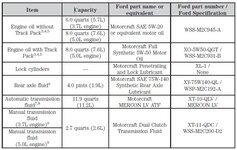You may recall that my 2014 GT is lowered on SR springs with Koni Orange dampers. I also have the Ford Performance aluminum one-piece drive shaft.
Over the weekend I installed these upgrades from BMR:
The UCA was set to the top-most position in the new bracket.
The UCA was adjusted to 0° on the pinion (per the formula).
Now there is a noticeable high-pitched whine at speeds above 60mph, only when I am on the gas—when I lift, the whine goes away immediately. We then set the pinion angle to 1° up toward the chassis (I don't remember if that is a negative or positive 1°). The whine became worse.
As a side note, previous to these moods I replaced the diff fluid with RedLine 75W/140.
Any ideas as to what may have happened or what needs to be addressed?
Your help / insight / expertise is much appreciated.
Other than the whine, the car feels great! No hop at take off. Yay!
Over the weekend I installed these upgrades from BMR:
- Boxed, non-adjustable LCAs with poly bushings (BMR-TCA032H)
- LCA relocation brackets (BMR-CAB005H)
- Adjustable UCA mount (BMR-UCM002H)
- Adjustable UCA (BMR-UTCA032)
The UCA was set to the top-most position in the new bracket.
The UCA was adjusted to 0° on the pinion (per the formula).
Now there is a noticeable high-pitched whine at speeds above 60mph, only when I am on the gas—when I lift, the whine goes away immediately. We then set the pinion angle to 1° up toward the chassis (I don't remember if that is a negative or positive 1°). The whine became worse.
As a side note, previous to these moods I replaced the diff fluid with RedLine 75W/140.
Any ideas as to what may have happened or what needs to be addressed?
Your help / insight / expertise is much appreciated.
Other than the whine, the car feels great! No hop at take off. Yay!















